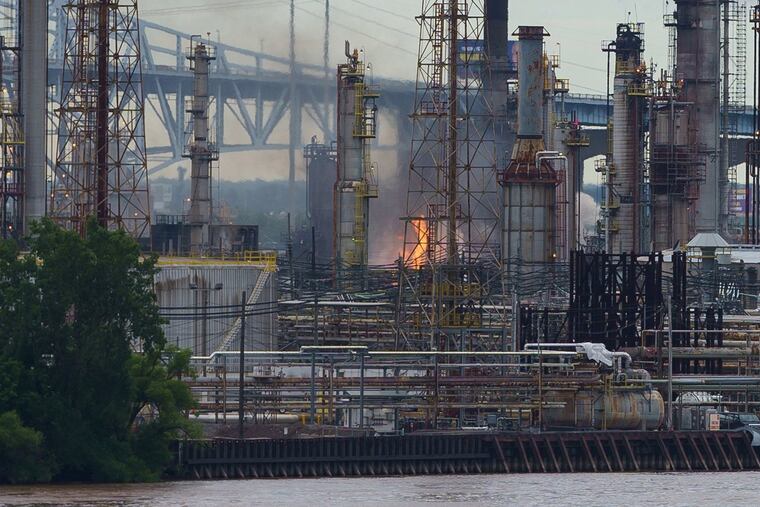A safer future for PES site changes the landscape for Philadelphia | Editorial
Philly City Hall seems willing to flex its muscle to guide the future of the closed PES refinery, which a bankruptcy court judge has agreed should be sold to a Chicago developer.

Mayor Jim Kenney’s proposal to ban any oil refinery in the city from using hydrogen fluoride (HF), a notoriously dangerous chemical, was a strong message and especially timely, coming two days before a U.S. Bankruptcy Court judge approved the sale of the Philadelphia Energy Solutions site. The South Philly refinery shut down after part of it exploded and burned last June 21; on Wednesday, Judge Kevin Gross affirmed the purchase of PES by a Chicago company that repurposes industrial properties. The company has no plans to restart the city’s sole remaining refinery, as the rejected suitor hoped to do. More than 1,000 workers have lost their jobs following the PES closing and bankruptcy.
It’s difficult to know whether the proposed ban factored into the court’s decision. But the mayor’s move — as well as his support for the recommendations of his Refinery Advisory Group, calling for a cleaner use for the site — demonstrates a commitment to aggressively use all available tools to help shape the future of this 1,300-acre property. The refinery complex on either side of the lower Schuylkill is bigger in area than Center City; more than 100,000 people live within a mile of its boundaries.
The $240 million purchase by Hilco Redevelopment Partners is expected to open the door to extensive demolition, remediation, and development on the site. Restrictive covenants on the property limit it to industrial and commercial uses and could prove difficult to circumvent. Petroleum-related enterprises began using the site in 1866, and studies show ground and water there are profoundly contaminated by benzene, lead, and other toxins, making residential or recreational development unlikely, if not impossible.
So it would seem the hopes of some residents in nearby neighborhoods to see the vast expanse of ground on the city’s southern gateway transformed into parks and recreational areas will not be realized, at least in the foreseeable future. Others have hoped to see renewable energy facilities, such as solar farms, built there. Kenney’s Refinery Advisory Group yielded a well-regarded report and a consensus that considerations of public safety, environmental quality, and economic development should guide future development. The process of bringing community voices into the conversation continues under the aegis of Drexel University’s Lindy Institute for Urban Innovation.
» READ MORE: Philly must plan for a post-refinery future | Editorial
» READ MORE: Could dream of converting Philly refinery into renewable energy facility turn into reality?
A professional and community-driven plan is just one tool Philly should use in partnership with the new owners to shape the site’s evolution. The city also has power and prerogatives over street construction and other infrastructure improvements that the property — essentially an island disconnected from the rest of the Philadelphia — will need to be commercially viable. The refinery is within a Keystone Opportunity Zone, a major state economic development incentive program, so Pennsylvania will be part of the process as well.
The stakes are high. This is the largest parcel available for redevelopment near the core of a city with a crippling poverty rate and many pressing needs. Projections indicate as many as 14,000 jobs may be created by demolition, remediation, construction, and businesses on the site over the next 10-15 years. Philadelphia, and Philadelphians, must work together to make sure this once-in-a-generation opportunity will be realized in full.